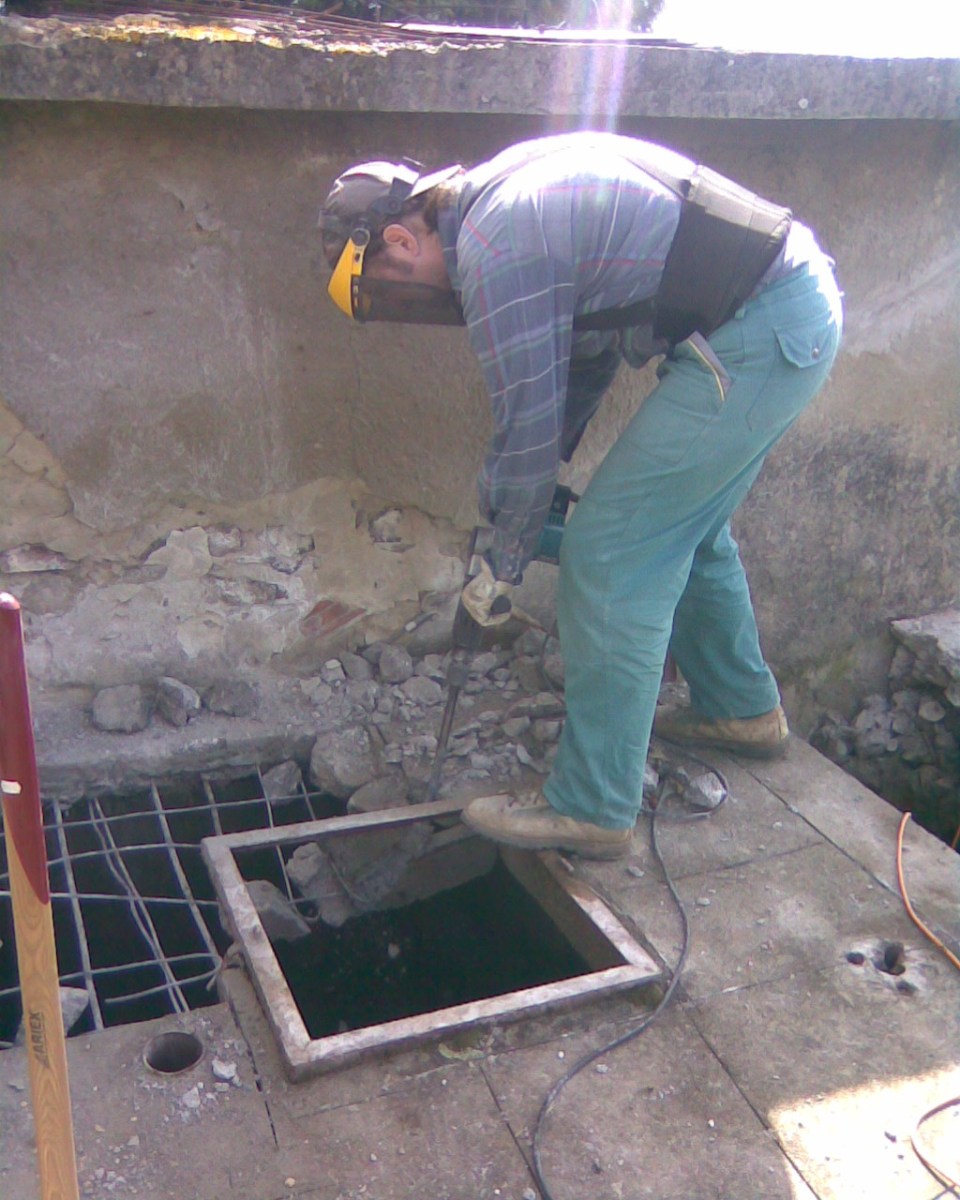Dear friends,
Did somebody use a construction firm to do technical inspection of house(before buying)?
I'll very appreciate if you share your experience.
Thanks in advance.
Alex
Technical inspection of house
Alex1959 wrote:Dear friends,
Did somebody use a construction firm to do technical inspection of house(before buying)?
I'll very appreciate if you share your experience.
Thanks in advance.
Alex
You can use an inspection service who will give you a written report with whatever you want in it, including valuation and estimates for modifications.
However, that's not enough in my opinion. You need to check things like the land registry, confirm locations of the corners of the plot etc. You can do some of it yourself if you can speak Hungarian or get Hungarian help. There's a lot of self-built (bodged) housing in Hungary. Often non-standard building techniques are used by amateurs and professionals. Often without following any good practice. You cannot see underfloors and inside walls and neither can the inspector so they can only report on what they can see. Modernisation has to be to modern standards. You could find the entire place needs to be gutted and rebuilt.
You really need to get a really good overall picture of the house, the land, the paperwork etc. BTW, don't touch a house with a CHF (Swiss Franc) mortgage on it where the bank has a lien. You could be liable for the negative equity of the previous owner.
Caveat emptor.
Agree with everything, houses were built by friends and relatives teaming up, camping out on site, and using whatever materials and components (beams, rebar, windows) they could steal from their job, adjusting the plans if needed.
Typical problems are walls cracking as the foundation sinks, water steeping through basement walls, and molding on the inside of thermal bridges, etc.
I'm surprised about this part:
fluffy2560 wrote:You really need to get a really good overall picture of the house, the land, the paperwork etc. BTW, don't touch a house with a CHF (Swiss Franc) mortgage on it where the bank has a lien. You could be liable for the negative equity of the previous owner.
Taking over the lease is not typical for real estate, only cars. You pay full price (taking out a loan yourself if need be), it's the sellers responsibility to clear the title and pay off their mortgage. I've never heard of a buyer getting hosed in such a deal.
szocske wrote:.....
fluffy2560 wrote:You really need to get a really good overall picture of the house, the land, the paperwork etc. BTW, don't touch a house with a CHF (Swiss Franc) mortgage on it where the bank has a lien. You could be liable for the negative equity of the previous owner.
Taking over the lease is not typical for real estate, only cars. You pay full price (taking out a loan yourself if need be), it's the sellers responsibility to clear the title and pay off their mortgage. I've never heard of a buyer getting hosed in such a deal.
I did not mention leases. Maybe the word lien was confusing. A lien is a charge on a property held by another party, usually the bank that gave the mortgage. This is recorded in the land registry.
From own property dealings, my understanding is that:
In the case of CHF loans and residential properties, there is very limited incentive for a bank to take a loss on a property in foreclosure (or even if foreclosure is possible here, given current conditions). They would rather just sit and wait. If there is a loss on paper, and a change of ownership, the bank will almost certainly demand the repayment of its losses against the house at some point when the legal and political situation improves. In other words, the debt is on the house, not the individuals. The bank's argument is probably that the unusual conditions here means that property is undervalued if they take a loss. This is of course nonsense as the market determines the value, not what's on the bank's debt book. The negative equity is not relieved by the owner selling the property as the bank can veto the sale - so agreeing with the owner is basically useless without the bank also agreeing up front. It's almost impossible to get a bank to agree (in the current conditions) to agree the sale price is full and final settlement of their debt when they will suffer a loss on said debt.
What it means at least to me is that the house with a loss making CHF mortgage could never be sold. One way to get hosed is to agree to pay the owner on the basis that they will pay off the bank. However, once they have the money, you could be left with the property and debt, when they've left the country. Alarm bells should ring if they ask for money and promise to pay off the mortgage. Never pay directly without the contract and ensuring they are who they say they are and have a free and clear title.
If there's a mortgage, and in particular, a CHF mortgage in arrears, avoid. Another way to do it is to pay the bank directly, obviously with the lawyer correctly ordering the papers so when that's done, the owner gets the money when the land registry entry provisionally changes (usually within 2 weeks) as the change signals no inteference with the bank and removal of any liens. Usually OK when the mortgage is in HUF.
BTW, there's no route to relief via individual bankruptcy which is the cause of much woe to many.
fluffy2560 wrote:You cannot see underfloors and inside walls
Drill a hole, then use a mirrored or video probe. Then patch the hole when done. The current owner may not like it, especially with wood floors**, but that is one way it can be done.
**But in old country houses especially wood floors are often laid on dirt so often need to be replaced anyway.
klsallee wrote:fluffy2560 wrote:You cannot see underfloors and inside walls
Drill a hole, then use a mirrored or video probe. Then patch the hole when done. The current owner may not like it, especially with wood floors**, but that is one way it can be done.
**But in old country houses especially wood floors are often laid on dirt so often need to be replaced anyway.
I had to remove a 1m x 0.5cm square of concrete floor upstairs. Needed to be that big to check the direction of beams. It took me about 6h using a relatively weak domestic 1500W hammer chisel. The concrete was fantasically tough. It would have been suitable for a nuclear bunker. Utterly unnecessary to use such heavy concrete. Home building bodging (="kontar" in Hungarian).
If renovating an old place, take the floors out anyway. Way back then, they didn't know about insulation. There's also the possibility that the floor has collapsed underneath any wooden boards or there's a load of rot if supported by wood.
fluffy2560 wrote:I had to remove a 1m x 0.5cm square of concrete floor upstairs. Needed to be that big to check the direction of beams. It took me about 6h using a relatively weak domestic 1500W hammer chisel.
Been there. Done that.
klsallee wrote:fluffy2560 wrote:I had to remove a 1m x 0.5cm square of concrete floor upstairs. Needed to be that big to check the direction of beams. It took me about 6h using a relatively weak domestic 1500W hammer chisel.
Been there. Done that.
[img align=C]https://stcoemgen.files.wordpress.com/2015/02/image086.jpg?w=960[/url]
That's it! Now I've got deja-vu. At least you had some face protection. I was doing it inside in a dark corner. BTW, standing on the object you are dismantling is probably not the best idea. Someone told me you can hire a mini-digger for about EUR 50. Might have made shorter work of that reinforced top. Waste (black) water tank? (Cess pit in UK English, dunno about US English).
fluffy2560 wrote:BTW, standing on the object you are dismantling is probably not the best idea. Someone told me you can hire a mini-digger for about EUR 50. Might have made shorter work of that reinforced top. Waste (black) water tank? (Cess pit in UK English, dunno about US English).
It was a water tank. Even had a nice old iron handle pump (located where the hole is in the lower right of the photo -- the left hole led the water in from the roof). But it was right next to the house foundation, and it leaked. Making the wall wet. Easier to take off the top and drop in a new fiberglass tank.
And you are absolutely correct. That image without a caption is a "Don't do this at home kids".
The details are, however: after I made the cuts in the concrete with a large angle cutter (with a concrete cutting disk) I thought I could just smash each cut square in with the large sledge hammer (handle just showing in the picture). But that rebar mesh defeated that idea, I had to rent that power hammer, and when I did get all the concrete knocked out I still could jump up and down on that rebar mesh. I had to finally cut that with the angle grinder using a disk for cutting iron. Need I say this all took more than 6 hours? I would have just hired someone to do it, but I thought, silly me, it would be an easy afternoon task.
*Sigh*. They just don't build them like that anymore.....
I would love to have been able to hire an excavator to take that out. I have done that on other projects. But the location in this case did not permit it. Had to be done manually.
fluffy2560 wrote:Cess pit in UK English
If that were for black water, Americans would call that a septic tank for catching the solids. The cesspool would be a second tank further away which has holes in it and act as drainage into a leach field.
Yeah, I grew up with a septic tank and cesspool.
klsallee wrote:I had to finally cut that with the angle grinder using a disk for cutting iron. Need I say this all took more than 6 hours? I would have just hired someone to do it, but I thought, silly me, it would be an easy afternoon task...if that were for black water, Americans would call that a septic tank for catching the solids. The cesspool would be a second tank further away which has holes in it and act as drainage into a leach field.
Yeah, I grew up with a septic tank and cesspool.
Ah yes, septic tank indeed. Name escaped me. Those things are combined in a lot of places. Basically solids went to the bottom and the liquids drained off into the land as per your description. And then once in a while someone comes and sucks it all out. They certainly should not have put a water tank next to the foundations. That's just nuts. A good 30-40 ft away seems about right. I also thought about an underground rainwater storage tank but when I looked into it, a well would be a better option - at least for gardens. One can take 6m3 per day free for domestic/garden use. That's quite a lot.
One thing you could have used on the rebar is oxyacetylene cutting. Rebar eats cutting disks.. It's actually quite cheap to do gas cutting and it goes through like butter in seconds. The equipment costs hardly anything. The biggest hassle is getting the bottles (tanks) etc but should be relatively easy to hire in an agricultural area. One thing is not to use Linde bottle rentals. Its very expensive to use their rental bottles here in HU. One has to use a lot of gas to make it worth while. I get my own gas from an independent but then again I might use a small bottle once every 3 or 4 years. I mainly use it to do brazing (hard soldering) for repairs on domestic items etc. My gas welding is terrible. In most cases, I use an ordinary stick welder which is quick and easy.









